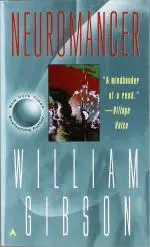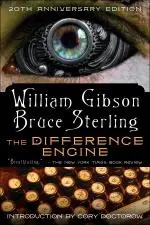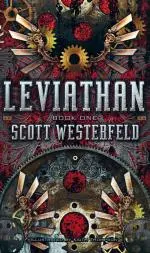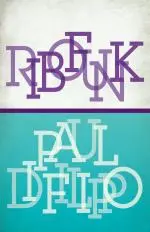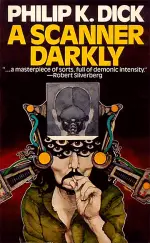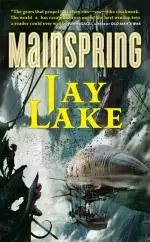“Punk” is one of those words that’s used in so many ways to describe so many things that it has lost all meaning. People have been kicking over garbage cans for millennia, so to speak, and Punky Brewster was more Brewster than punk.
To complicate matters further, we use the word to describe various subgenres of science fiction, and things have gotten completely out of hand.
The basic premise of sci-fi punk is a focus on technology, usually one particular kind of technology. There’s an element of rebellion, too, and the main characters are often marginalized members of society (hinting at the original meaning of the word punk).
We often use the term “retro-futurism” to describe sci-fi punk because many of these subgenres are based primarily on the technology and tropes of a past era, but with a futuristic twist. This too has gotten completely out of hand, as you’ll see shortly.
Below is a list of the various subgenres of science fiction that have acquired the punk suffix. The list is categorized by how established they are. Some have been around for decades, with plenty of examples, while others are just mishmashes and inside jokes that keep popping up.
The Established
The types of literary punk that are well known and have many examples.
![]() Cyberpunk
Cyberpunk
The granddaddy of them all. This is what started the trend of appending “punk” to various words to describe a new genre. Cyberpunk is characterized by a dark, dystopian vision of the future, where technology and humanity have bled together in a dirty neon melange of corporate oppression and antihero hackers. Frequently, the word “gritty” is used to describe this genre, although that’s another word that’s so overused that it has lost all meaning. Are we talking about my oatmeal or the latest reboot of a superhero franchise? Nobody knows, anymore.
Cyberpunk is internet and implants, ghettos and gangs, fluorescent lights and digital fights. This vision has become so ubiquitous in books and movies that it is the default way we think of the future, even though we’re already living it in many ways.
Curiously, the movie most often cited as cyberpunk, Blade Runner, is much more cyberpunk than the book it’s based on, Philip K. Dick’s Do Androids Dream of Electric Sheep. The quintessential example of the cyberpunk novel is Neuromancer, by William Gibson. While it came out two years after Blade Runner and isn’t recognized as the first cyberpunk novel, it’s easily the best example of the genre and has become synonymous with cyberpunk.
![]() Steampunk
Steampunk
This genre feels relatively new, particularly with its proliferation online in the last decade. However, the first use of the word to describe a story was recorded in 1987, not long after the birth of cyberpunk. Since then it has been both hailed as innovative and dismissed as silly.
Where cyberpunk is about the future that may be, steampunk is about the past that could have been. The main characteristic of the genre is Victorian-era clothing and technology, although the technology is combined in new ways to create devices that would have been impossible in the real Victorian era (anything from ray guns and jetpacks, to robots and computers). Usually the technology is steam-powered — hence the name — and the aesthetic prominently features gears and rough machinery. There are often fantasy or supernatural elements worked into steampunk tales, too.
The writing style has been around since the early 80s, but the book most often cited as the first “real” steampunk novel is The Difference Engine, by Bruce Sterling and William Gibson. (There’s Gibson again; he’s so punk, dude! I bet he kicks garbage cans.)
![]() Dieselpunk
Dieselpunk
This type of sci-fi punk is a product of the 21st century, starting around 2001, although various movies and books have played with the idea for decades. The easiest way to describe dieselpunk is “World War II: The Genre.” It’s all about big metal machines and diesel engines billowing black smoke. In many ways it feels very similar to steampunk, but with more recent technology and an appreciation for the styles and worldviews of the late 1930s and early 1940s. Instead of giant wood-and-brass airships, think giant steel zeppelins.
Dieselpunk has a much stronger presence in movies and TV (e.g. Sky Captain and the World of Tomorrow and The Rocketeer) than in books, but there is a growing contingent of novels, of which the most well known is probably Scott Westerfeld’s Leviathan series.
The Semi-Established
These subgenres are fairly well defined but aren’t as well represented in science fiction literature, or they feel like a slightly more narrowly defined version of another subgenre.
![]() Biopunk
Biopunk
This is the first real offshoot of cyberpunk. The idea of biopunk is to take the dirty dystopia and corporate espionage and focus more on biology than gadgetry. It’s about hacking DNA instead of computer code, and the viruses are of the Ebola sort.
It could be argued that one of the first biopunk stories is Mary Shelley’s Frankenstein, but one of the most recognized practitioners of biopunk is Paul Di Filippo. He prefers to call the genre Ribofunk, which is the title of one of his books. It also begs to be the name of a music genre, but so far that hasn’t happened.
![]() Bugpunk
Bugpunk
It sounds like a genre created for Cronenberg films, but this is a mix of cyberpunk, biopunk, and fantasy that resulted in an unholy and wholly awesome subgenre. Or maybe it’s a sub-subgenre. Who knows. All we know is that Kameron Hurley created this style in which bugs feature prominently and are augmented by technology, or maybe they are used to augment technology. Either way, it’s fascinating.
![]() Transistorpunk
Transistorpunk
Jumping forward to the 60s and the Cold War, transistorpunk fills a niche no one knew existed. Mostly it’s just a way to categorize Philip K. Dick novels, but more for the drugs than the technology (not a coincidence that some people prefer the term psychedelicpunk). Perhaps we can throw James Bond in there because Q had some fun gadgets, but Bond has been hopping generations like a drunken time traveler and is decidedly not punk, no matter how “gritty” he has become in recent years.
Nanopunk
This is a difficult one because it can easily be categorized as cyberpunk (and often has been). However, some people prefer to break it out into a separate subgenre because of the focus on nanotechnology and its implications.
Decopunk
This is the retro-futuristic version of the roaring 1920s. Think dieselpunk, but with less massive metal airplanes and more Art Deco. I know this feels like splitting hairs, but brace yourself, because it’s only going to get worse from here on out.
Atompunk
Also known as atomicpunk. This is dieselpunk, but focused on the technology and styles of the post-war era of the early 1950s. This is when atomic power and world dominance were the wave of the future, and technological optimism was at its peak. People are irradiated for little harm and huge benefit, and plucky robot companions clean your house and babysit your kids.
The Questionable
These are the subgenres of punk literature that aren’t well represented, but have been coined nonetheless. If you thought we were splitting hairs before, we’re slicing and dicing now.
Teslapunk
This one sounds interesting because, well, it’s Tesla. Everybody loves to hear about crazy Tesla inventions. However, unless the story stars Tesla himself, it gets hard to distinguish from steampunk and decopunk. If anything, teslapunk is focused primarily on electricity, rather than steam.
![]() Clockpunk
Clockpunk
Clockpunk narrowly misses being steampunk, even though airships still show up. It turns back the clock a little further than steampunk, focusing on the Renaissance era instead of the Victorian. Basically, it’s steampunk Leonardo DaVinci. Actually, Leonardo was as steampunk as it gets. He thought of helicopters and tanks, for Tesla’s sake! But maybe a distinction must be made. The most prominent example of clockpunk is Mainspring, by Jay Lake.
Splatterpunk
This isn’t a genre of science fiction so much as a movement to startle people by over-emphasizing and even fetishizing the blood and gore in horror stories. It was a statement against sanitizing horror. While it doesn’t follow the trend of focusing on technology, the intent behind the movement is easily the most truly “punk” thing on this entire list.
Mythpunk
Possibly the most questionable one because it is so easy to categorize these stories as modern fantasy or urban fantasy. Take myths, add postmodern techniques — even though that can mean any number of things — and you have mythpunk. I think.
The Ridiculous
Now we’re just getting absurd. People love to tack the word punk on the end of words and claim it as a new genre, even though there is very little foundation for it.
Spacepunk
I won’t even bother with this one beyond saying that it’s just space opera, a long-standing and well known genre of science fiction. Full stop.
Cattlepunk
I almost dismissed this one completely because, I mean, c’mon. But then I remembered a cartoon TV series called Wild West C.O.W.-Boys of Moo Mesa, with cowboys that were anthropomorphic cows. No, I’m not kidding. And I loved that show. I’m still not kidding. Cows riding horses; if anything is cattlepunk, that is. And I suppose there can be a small distinction between Victorian steampunk and wild west retro-futurism, even though Will Smith’s Wild Wild West was just a steampunk western, so … you decide.
Stonepunk
Now we’re just taking the retro-futurism thing too far. It’s not like The Flintstones was begging for a genre classification. It’s just Stone Age tools used to make technology that would have given cavemen heart attacks, or a new religion. To make matters worse, some people insist on further distinguishing between eras, giving us bronzepunk for anything even remotely influenced by Egypt, sandalpunk or ironpunk to describe anything in an undefined period thereafter (including Greek or Roman times), and candlepunk or castlepunk to describe the middle ages. Basically, we just need to make sure that we have every (western) time period covered. Who knows, though, maybe we’ll get some eastern interest and start seeing Mingpunk.
Mannerspunk
When I learned of this one, I laughed and laughed. Then Downton Abbey sprang to mind, and I laughed and laughed some more.
Oceanpunk
Uhh, I really don’t know. Pirates, I think.
Elfpunk
Good grief.
Nowpunk
Easily the most ridiculous of them all. Most of you might recognize this from its more common name: contemporary literature.
Dungeonpunk
Feeling a bit punkish myself, I made this one up as a joke. Then, on a whim, I Googled it and realized everything really has been done before.
Lobsterpunk
My second attempt at a joke. I imagine it to be a cross between Attack of the Killer Tomatoes (the cartoon TV series, not the film) and The Little Mermaid. And no, I didn’t Google that one because I’m tired of being disappointed.
What do you think about the silly deviations between all the "punk" subgenres? Which is your favorite?

About the author
Daniel Hope is a writer, ukelele player, and unrepentant nerd. He has worked as a technology journalist (too frantic), a PR writer (too smarmy), and a marketing writer (too fake). He is currently the Managing Editor of Fiction Vortex, an online publication for science fiction and fantasy short stories. At FV, he's known as the Voice of Reason. That means FV staff members wish he would stop worrying all the time. He thinks they should stop smiling so much.
Daniel Hope lives in California and dreams of writing more. When distraught about his output, he consoles himself with great beaches and gorgeous weather. He recently published his science fiction novel, The Inevitable, on the Kindle Store and Smashwords. Find out more at his site: SpeculativeIntent.com.
